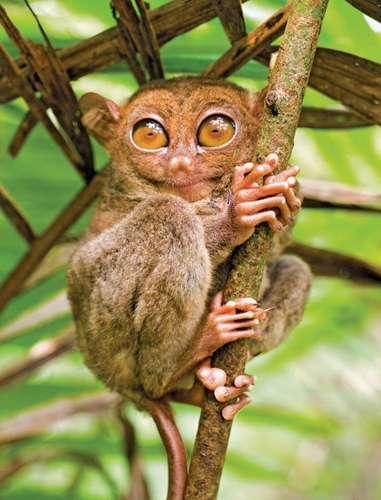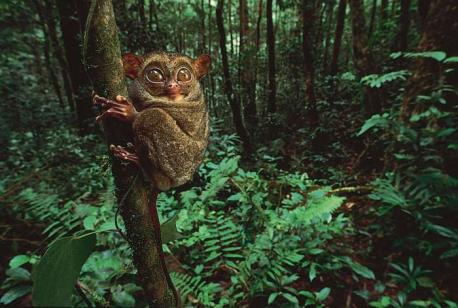Results: Tarsier
Published on 03/24/2020
QUESTIONS
GO to COMMENTS
Comments
1.
1.
(Source: Britannica) Tarsiers can be any of six or more species of small leaping primates found only on various islands of Southeast Asia, including the Philippines. Tarsiers are intermediate in form between lemurs and monkeys, measuring only about 3.5–6 inches long, excluding a tail of about twice that length. Tarsiers are lemurlike in being nocturnal and having a well-developed sense of smell. However, like monkeys, apes, and humans, the nose is dry and hair-covered, not moist and bald as is that of lemurs. The eyes and placenta are also simiiform in structure. Did you ever meet one of these cute creatures?

Yes
7%
168 votes
No
93%
2288 votes
2.
2.
The tarsier's small brain has an enormous visual cortex to process information from the large goggling eyes, the animal's most striking feature. The size of the eyes and visual cortex is probably made necessary by the absence of a reflective layer (tapetum) that the eyes of most other nocturnal mammals possess. The tarsier is also unusual in having especially long ankle bones (tarsals, hence the name tarsier), a short body, and a round head that can be rotated 180°. The face is short, with large, membranous ears that are almost constantly in motion. The fur is thick, silky, and coloured gray to dark brown. The tail is scaly on the underside like a rat's; in most species it has an edging or terminal brush of hair. Can you mention any other mammal that can rotate its head 180 degrees?

Yes
19%
460 votes
No
81%
1996 votes
3.
3.
Tarsiers are the only entirely carnivorous primates, preying on insects, lizards, and snakes. Clinging upright to trees, they press the tail against the trunk for support. Their grip is also aided by the tips of their digits, which are expanded into disklike adhesive pads. Tarsiers move through the forest by launching themselves from trunk to trunk propelled by their greatly elongated hind limbs. Can you mention any other tiny carnivores among mammals available in your area?
Yes
7%
182 votes
No
66%
1618 votes
Undecided
9%
229 votes
Not Applicable
17%
427 votes
4.
4.
Adults live in monogamous pairs and keep in contact vocally during the night, defending territory against other pairs using extremely high-pitched calls. On the island of Celebes (Sulawesi) these calls are duets—different but complementary calls made by the male and female. Single young are born in a fairly well-developed state, furred and with eyes open, after a gestation of perhaps six months. Just in case you wonder, these creatures do not do well in captivity. They severely hurt themselves trying to escape and die. Are there any local animals in your area who defend their territory making noises of any kind? Forget about dogs which are probably the local kings barking to defend their territory.
Yes
26%
637 votes
No
74%
1819 votes
COMMENTS


